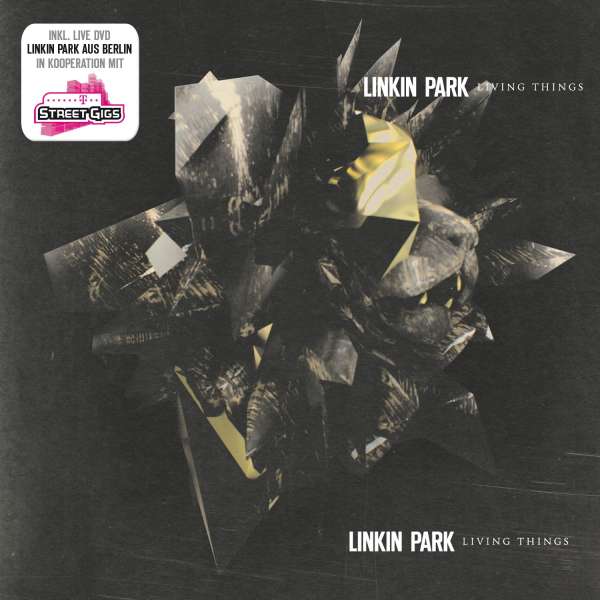Binary sort algorithm ruby
Data: 1.09.2018 / Rating: 4.7 / Views: 672Gallery of Video:
Gallery of Images:
Binary sort algorithm ruby
Shell sort is a complex sorting algorithm to make work well, which is why it is not seen often in practice. It is, however, making a bit of a comeback in embedded systems. We nevertheless think it is a very cool algorithm to have heard of as a computer science student and think it has promise in a number of situations, especially in. A binary search tree can be used to implement a simple sorting algorithm. Similar to heapsort, we insert all the values we wish to sort into a new ordered data structurein this case a binary search treeand then traverse it in order. Listing (below) provides an example of the Genetic Algorithm implemented in the Ruby Programming Language. The demonstration problem is a maximizing binary optimization problem called OneMax that seeks a binary string of unity (all '1' bits). Merge Sort follows the rule of Divide and Conquer to sort a given set of numberselements, recursively, hence consuming less time. In the last two tutorials, we learned about Selection Sort and Insertion Sort, both of which have a worstcase running time of O(n 2). As the size of input grows, insertion and selection sort can take a long time to run. This is a basic implementation using C. Hoare's algorithm with pivot in middle (sometimes referred to as binary or dichotomic sort). The use of a script object to store the list makes this version about 10 times faster than previously proposed one (for a list of a 1000 strings). A binary search algorithm (or binary chop) is a technique for finding a particular value in a linear array, by ruling out half of the data at each step, widely but not exclusively used in computer science. Refactoring binary search algorithm in Ruby. Combinatorial searching of Huffman trees. Simplification of byte array comparison algorithm. Move updateattributes into class and check for nonnil params to update only. A binary search algorithm finds an item in a sorted array in time. A brute force search would walk through the whole array, taking time in the worst case. Let's say we have a sorted array of numbers. To find a number with a binary search, we. Merge Sort Using Ruby and Recursion. I am implementing the algorithms of Course: Coursera Algorithm I. I implemented the MergeSort using recursion and although it sorts correctly I am not sure if it is a correct implementation of this algorithm. Make a beautiful binary string zsh and POSIX equivalent of. Inserting at the node level will check what the new key is in order to insert it in the appropriate place. The restriction being that the key in any node is larger than the keys in all nodes in that nodes left subtree and smaller than the keys in all nodes in that nodes right subtree. Read and learn for free about the following article: A guessing game If you're seeing this message, it means we're having trouble loading external resources on our website. If you're behind a web filter, please make sure that the domains. TeachingTree is an open platform that lets anybody organize educational content. Our goal is for students to quickly access the exact clips they need in order to learn individual concepts. Everyone is encouraged to help by adding videos or tagging concepts. The Quick Sort is a popular sorting algorithm, which has been discussed in detail, with examples and C code over here: Arrays and Sorting: Quick Sort ( with C Program source code). In this tutorial, we will take a quick look at the ruby implementation of Quick Sort. Sorting algorithms in Ruby If you wish to learn sort algorithms, this is the best website to visit. Bad news for English speakers is that this site is written in Japanese. Tree represents the nodes connected by edges. We will discuss binary tree or binary search tree specifically. Binary Tree is a special datastructure used for data storage purposes. A binary tree has a special condition that each node can have a maximum of two children. A binary tree has the benefits. Rubys# index method is more versatile (it can handle unsorted arrays, for one thing), but its good to know whats underneath the hood of a binarysort method. JavaScript Programming The binary search algorithm stops at this point, since it has found the answer. It took only two guesses, instead of the 19 guesses that linear search would have taken. You can step through that again in the visualization below. A binary search divides a range of values into halves, and continues to narrow down the field of search until the unknown value is found. It is the classic example of a divide and conquer algorithm. Concise Notes on Data Structures and Algorithms Ruby Edition Christopher Fox James Madison University 2011. defining these terms We begin with a definition for algorithm. Algorithm: A finite sequence of steps for. The basic idea of a data structure is to store data in a way that meets the needs of your particular application. You might be inclined to store a particular kind data in one giant array, but it would be rather time consuming to locate a specific value if you had a significant number and depth of. RubyJava () Binary search is fairly trivial, as it is easy to create a function extending the functionality of particular class. Here, we extend Array class with the binary search. In computer science, binary search, also known as halfinterval search, logarithmic search, or binary chop, is a search algorithm that finds the position of a target value within a sorted array. [4 [5 Binary search compares the target value to the middle element of the array. Before we move on to the analysis, we should note that this algorithm is a great example of a divide and conquer strategy. Divide and conquer means that we divide the problem into smaller pieces, solve the smaller pieces in some way, and then reassemble the whole problem to get the result. Python Search and Sorting: Exercise6 with Solution. Write a Python program to sort a list of elements using the insertion sort algorithm. Note: According to Wikipedia Insertion sort is a simple sorting algorithm that builds the final sorted array (or list) one item at a time. Either way Bubble sort is a good first sorting algorithm to learn, and ruby makes it all the better with it's clean syntax. So, common, stop standing there waiting for things to get easier. Which algorithm should one use, BoyerMoore, Turbo BoyerMoore or BoyerMooreHorspool? In theory Turbo BoyerMoore is an attractive alternative because of its worstcase performance, but realworld experience has shown that theory is rarely the same as practice. The algorithm Jon used, linear search, seemed familiar to us and you could understand it because it's how most of us search for things in real life anyway. Brittney's approach on the other hand got results quickly but was a bit harder to understand so let's break it down. Bubble sort is a simple sorting algorithm. This sorting algorithm is comparisonbased algorithm in which each pair of adjacent elements is compared and the elements are swapped if they are not in order. This algorithm is not suitable for large data sets as its average and worst case complexity are. Learn how to create the bubble sort algorithm in Ruby and then never use again! Go through the full Ruby algorithm guide here. Binary search is a more efficient search algorithm which relies on the elements in the list being sorted. We apply the same search process to progressively smaller sublists of the original list, starting with the whole list and approximately halving the search area every time. Binary Search Note that we introduce on line 16 a builtin Ruby feature to check if a value is already present within an array and on line 22 to sort an array in place. 16 while 21# Sort the array (with Ruby's builtin sort) 22 arr. A binary search tree is a binary tree data structure that works based on the principle of binary search: the records of the tree are arranged in sorted order, and traversal of the tree is performed using a logarithmic time binary searchlike algorithm. Linear search is used on a collections of items. It relies on the technique of traversing a list from start to end by exploring properties of all the elements that are found on the way. Although insertion sort is an O(n 2) algorithm, its simplicity, low overhead, good locality of reference and efficiency make it a good choice in two cases: (i) small n, (ii) as the final finishingoff algorithm for O ( n log n ) algorithms such as mergesort and quicksort. The Insertion Sort is a popular quadratic sorting algorithm, which has been discussed in detail, with examples and C code over here: Arrays and Sorting: Insertion Sort ( with C Program source code). In this tutorial, we will take a quick look at the ruby implementation of Insertion Sort. i tried writing my own alphabet search for Chris Pine tutorial chapter 7, and i waned to implement a binary method. there is no validity for string input, so i don't know what will happen with inte 5. The insertion sort, although still \(O(n2)\), works in a slightly different way. It always maintains a sorted sublist in the lower positions of the list. Each new item is then inserted back into the previous sublist such that the sorted sublist is one item larger. I'm trying to implement the Bubble sort method into an easy coding problem for Ruby, but I'm having some trouble. I understand the idea is to look at the value of the first element and compare it to the value of the second element and then swap them accordingly, but I. By using binary search, finds a value from this array which meets the given condition in O(log n) where n is the size of the array. You can use this method in two. Binary Search is applied on the sorted array or list of large size. It's time complexity of O(log n) makes it very fast as compared to other sorting algorithms. The only limitation is that the array or list of elements must be sorted for the binary search algorithm to work on it. Introduction to Algorithms with Ruby. in two of the most fundamental challenges in computer science: sorting and searching. The algorithms we use (selection sort and binary search) are not the fastest or most efficient, but they are a good starting point if youve never worked with algorithms before. Binary search is an essential search algorithm that takes in a sorted array and returns the index of the value we are searching for. We do this with the following steps: Find the midpoint of the sorted array. Compare the midpoint to the value of interest. If the midpoint is larger than the value. Binary search is a lot more than just a way to find elements in a sorted array. In this tutorial, I will help you understand binary search better by going through some basic problems then applying them in technical questions asked during interviews. Algorithms and Structures in Ruby. This site is a means for me (Phil McClure) to document code snippets and algorithms while I'm practicing them. It is mainly for myself to use as reference but I thought it might be useful to other people so I decided to make it public for all to see and criticise. Sorting is ordering a list of objects. We can distinguish two types of sorting. If the number of objects is small enough to fits into the main memory, sorting is called internal sorting. If the number of objects is so large that some of them reside on external storage during the sort, it is called external sorting. In this chapter we consider the following internal sorting. DESCRIPTION: Started as a Google Summer of Code 2008 project. Written by Kanwei Li, mentored by Austin Ziegler. Original Proposal: Using the right data structure or algorithm for the situation is an important aspect of programming. Algorithms playground for common questions solved in ruby syntax. In case you want to prepare yourself for a job interview try to solve it yourself first, then have a look here. Ruby implementation of quicksort, mergesort and binary search sort. rb
Related Images:
- The day i was born essay
- The ghost the darkness
- Marvels Jessica Jones Season 1 Complete
- Box car racer
- Bossa nova baby
- Le missionnaire 2018
- Windows 7 ultimate 64 bit sp1
- Peter pop show
- Cholo lets go
- Marvels agents s02
- Sample Email Templates For Communication Go Live
- Big dick dvd
- Big Ideas Math Workbook 8th Grade Answers
- Loukyam telugu movie songs
- Microsoft office x64 full
- A Fire Upon The Deep Epub
- Bombs away dubstep
- Hamish macbeth book
- Sound forge with full version
- The lady sings the blues
- Imo model course
- The Blood of Fu Manchu
- The blacklist season 2 episode 2
- The pick of destiny dutch
- Professor green discography
- The Born Queen
- 2018 1080p grym
- Pink floyd 24 96
- Design of Machine Tools
- Candy cr 81 pdf
- Walk the earth
- 2018 forest of the damned
- Assassins DP
- Syphon filter iso
- Hart to hart season 2
- Retro hits 80
- Happy ending 320kbps
- Star wars the phantom menace
- Curtis mayfield back
- Hot hot sexy
- Moms In Heat
- Auction hunters seas
- Assassins creed 3
- Call girl ind
- WWE Raw games
- The bad apples
- Configuring Financial Accounting In Sap
- Jaguar Xk8 Owners Manual 1999 Pdf
- Staci silverstone party
- Witness harrison ford
- Photo red eye
- The best of my life
- La momie francais
- Drake kanye west forever
- Bobs burgers dvdrip
- Business And Management Paul Hoang
- Sims money pack
- Disney jack jack attack
- Mercedes Benz Model 107 Service Manual Library
- Call of duty 3 modern warfare 3
- Life of muhammad ali
- Guardians of the galaxy awesome mix vol 1
- Advanced analytics course series sas
- Minami ke tadaima utw
- Rpt pendidikan islam tahun 5 2017 word
- Communication Progressive Du Francais DES Affaires
- Arbitration Law And Practice In China
- Bones S10E02 720p
- Dawn of the Felines
- Encyclopedia of engineering
- Source code anox
- Teri justajoo album free mp3 download
- Lmfao champagne shower
- Lexi bloom private
- I am weasel
- Cosmos a spacetime odyssey s01e0
- Outer limits new series
- Lizard lick towing 3
- Write Screenplays That Sell The Ackerman Way
- Despicable Me 2 eng
- Quantum field theory pdf
- Trop de elite 2
- Android Injustice Gods Among Us











